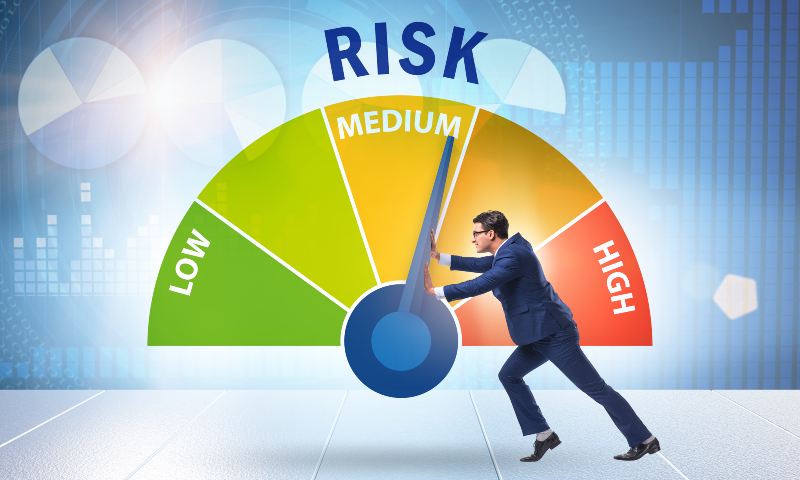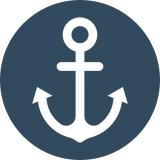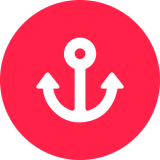Pre-Inspection Audits for SIRE, CDI & PSC
Your trusted partner for flawless inspection results.
Achieve SIRE 2.0, CDI, and PSC compliance. Reduce operational risks. Secure your reputation and commercial success.

WHY PRE-INSPECTION MATTERS
Don’t let small issues turn into costly delays, off-hire, or reputational damage. Our pre-inspection audit uncovers hidden deficiencies and compliance gaps before official vetting. We help you address findings early, so you avoid last-minute surprises and keep your vessel trading.
Every year, many vessels face costly delays and charter losses due to overlooked minor deficiencies. Regular pre-inspection audits help identify and resolve these issues early, protecting your commercial interests.
ℹ️Pro tip:
A single negative observation can lead to lost charters and financial penalties. Prevention is always better than cure.

Stay ahead of evolving maritime regulations and industry standards, including SIRE 2.0, CDI, and PSC. Our comprehensive audits leave no detail overlooked – from technical documentation to operational routines. We identify gaps and help you implement corrective actions, ensuring your vessel is always inspection-ready and fully compliant.
With our support, you minimize negative observations and maximize your vessel’s commercial opportunities.
ℹ️Did you know?
Over 70% of failed SIRE or PSC inspections are due to overlooked documentation or unprepared crew, not technical defects.

Well-prepared crew is your best asset during any inspection. We coach and assess your team, building their awareness, confidence, and readiness for vetting. Empowered crew means fewer surprises and better results.
Our onboard training sessions simulate real vetting scenarios, ensuring every officer and rating understands what inspectors look for. After our audit, your crew will feel confident, know their documentation, and be ready to answer tough questions
ℹ️Fact:
Well-prepared crew reduces negative findings by up to 60% – that’s proven in SIRE 2.0 audits.

WHAT WE DELIVER – OUR AUDIT PROCESS
Our process ensures nothing is missed. From paperwork to people, we deliver actionable solutions – not just generic reports. With us, your vessel is ready for every vetting challenge.
Document Review
Thorough analysis of all certificates, SMS manuals, and previous inspection reports. We identify gaps and prepare a custom checklist tailored to your vessel and inspection type.
On-board Inspection
Comprehensive walkthrough of all technical, operational, and safety areas. We observe real onboard routines, verify compliance, and simulate key elements of SIRE, CDI, or PSC audits.
Crew Training & Interview
Focused crew interviews and training sessions. We check awareness, readiness, and response to real vetting questions, boosting confidence during inspection.
Action Report
You receive a clear, prioritized report with practical recommendations and a step-by-step action plan. Immediate debrief onboard or online to clarify findings and next steps.
DETAILED AUDIT TYPES
Scope of Audit
- Static and Dynamic Navigational Assessment including Behavioural Competency Assessment and Verification.
- Comprehensive navigational audits are conducted while on passage and review all sections of a voyage
- Should include as a minimum a review of passage plans, chart corrections, navigational records, navigational equipment, compliance with company procedures and documentation.
- Use the opportunity to promote robust navigational practices, chart-work, passage planning and good seamanship
- Identify any additional training needs, whether this be specific to an individual or a vessel, or a fleet wide need.
Audit Interval
All fleet vessels are assessed at intervals not exceeding 12 months (static) and 24 months (dynamic).
Auditor Competences
Navigation assessments should be conducted by an experienced Master Mariner with command experience. Hold ECDIS certificate, auditing and Behavioural Competency Assessment Course, Train the trainer.
Expected Evidence
- The report for the static & dynamic navigational assessment declared by the operator through the pre-inspection questionnaire (PIQ).
- The Bridge Log Book to cover the period of the reported dynamic navigation assessment
- A corrective action plan with due dates for each area for improvement identified during the navigational assessment.
- Supporting evidence for each closed area for improvement identified and included in the corrective action plan
Scope of Audit
Comprehensive cargo, ballast and bunkering operational audit, including evaluation of procedures, documentation, operational practices and team performance. The audit covers all relevant cargo operations, tank cleaning, ballast and bunker handling, as well as compliance with company procedures and international standards.
Key audit areas include:
- Operational practices and compliance with industry guidelines and company procedures.
- Skills and proficiency levels of the personnel involved in cargo, ballast, and bunkering operations.
- Team effectiveness during all stages of cargo and ballast management.
- Opportunity to promote robust practices and continuous improvement.
- Identifying training needs, whether individual, vessel, or fleet-wide.
- Supervision of junior officers and cadets.
- Record keeping and documentation quality.
Audit Interval
All fleet vessels are assessed at intervals not exceeding 12 months (annually).
Auditor Competences
Cargo & Ballasting audits should be conducted by a company representative who is, or has been, an experienced senior deck officer (preferably a Master Mariner with command experience), fully up to date with company cargo operational practices, the International Safety Guide for Oil Tankers and Terminals, and industry best practices.
Expected Evidence
- The report for the comprehensive cargo audit conducted by a suitably qualified and experienced company representative as declared through the pre-inspection questionnaire.
- The Deck Log Book and/or Cargo Log Book to cover the period of the reported comprehensive cargo audit (for geographical and operational verification purposes).
- A corrective action plan with due dates for each area for improvement identified during the audit.
- Supporting evidence for each closed area for improvement identified and included in the corrective action plan, which may include lessons learnt documents shared across the fleet.
Scope of Audit
Comprehensive live audit of mooring and anchoring operations, conducted by a suitably qualified and experienced company representative. The audit covers all vessel types: oil, chemical, LPG, LNG.
- Includes observation of operational practices, team behaviour and leadership, skills and proficiency, adherence to industry guidelines (MEG4, OCIMF, INTERTANKO), documentation and equipment.
- Assesses all stages of mooring and anchoring: preparation, walking back/let go, heaving up anchor, mooring line handling, teamwork, and communication.
- Identifies deviations from standard practices and additional training needs (individual, vessel, or fleet-wide).
Key Points Checked
- Operational compliance with industry guidelines and company procedures
- Leadership and effectiveness of the team during all mooring/anchoring operations
- Robustness of seamanship and safety practices
- Supervision of junior officers, training of cadets
- Record keeping and documentation
Audit Interval
All fleet vessels must undergo a comprehensive mooring and anchoring audit at least once every 12 months.
Auditor Competences
The audit should be carried out by an experienced Master Mariner or senior deck officer with command experience, fully up to date with company mooring and anchoring procedures, OCIMF Mooring Equipment Guidelines (MEG4), OCIMF Anchoring Systems and Procedures, and industry best practices.
Expected Evidence
- The audit report conducted by a suitably qualified and experienced company representative, as declared in the pre-inspection questionnaire.
- Deck Log Book entries covering the audited period (for geographical and operational verification purposes).
- A corrective action plan with due dates for each identified area of improvement.
- Supporting evidence for closure of each action, including lessons learnt documents shared fleetwide.
Scope of Audit
Comprehensive engineering audit by a qualified company representative, covering all aspects of machinery space management, engineering routines, and bunkering operations.
- Includes both static and dynamic assessments of engine room operations, engineering team performance, machinery space practices, and bunkering procedures.
- Should cover, at minimum: review of maintenance records, planned maintenance system (PMS), engineering logs, safety systems, bunkering documentation, and compliance with SMS requirements.
- Focuses on operational practices, crew readiness, management of critical operations, and compliance with statutory and industry guidelines (ICS, OCIMF).
- Identifies additional training needs, whether individual, vessel-specific, or fleet-wide.
Key Audit Focus
- Compliance: Engineering practices comply with industry standards and company procedures.
- Team Assessment: Evaluation of skills and proficiency of engineering team during all operational phases, including maneuvering and cargo operations.
- Leadership: Effectiveness of the Chief Engineer and delegation of responsibilities.
- Best Practices: Promotion of robust engineering practices and good seamanship.
- Supervision: Adequate supervision of junior officers and cadet training during critical operations.
- Recordkeeping: Ensuring logs and records are complete and accurate.
Audit Interval
All fleet vessels are audited while on passage at intervals not exceeding 12 months.
Auditor Competences
Engineering audits should be conducted by an experienced senior engineer officer (preferably a Chief Engineer with command experience), who is fully up to date with company engineering practices, the International Safety Guide for Oil Tankers and Terminals (ISGOTT), ICS Engine Room Procedures Guide, and current industry best practices.
Expected Evidence
- Audit report completed by a suitably qualified and experienced company representative, as declared in the pre-inspection questionnaire.
- Engine Room Log Book covering the period of the reported engineering audit (for operational and geographical verification).
- Corrective action plan with deadlines for each area identified for improvement during the audit.
- Supporting evidence for each closed-out improvement action (such as lessons learnt documents shared across the fleet).
Scope of Audit
Unannounced Remote Navigational Assessment is conducted by an independent contractor or specialist company representative, without prior notification to the vessel. The assessment utilizes Voyage Data Recorder (VDR) and ECDIS data to remotely review navigational standards, procedures, and bridge team performance in accordance with OCIMF and SIRE requirements.
This assessment covers:
- Review of passage plans, navigation records, under-keel clearance calculations, and supporting documentation
- Assessment of compliance with company navigational policies, SMS, and industry best practices
- Verification that all phases of a voyage, including high-risk segments (e.g., canal transits, pilotage, congested areas), are adequately assessed
- Evaluation of bridge team performance in a natural environment, without the influence of onboard inspectors
Audit Interval
Remote navigational assessments are conducted at intervals not exceeding 12 months for all vessels. Where traditional onboard audits are impractical (e.g., due to trading patterns), remote assessments may be used as an alternative or supplementary method.
Auditor Competences
Remote assessments must be performed by an experienced Master Mariner (senior deck officer), holding valid ECDIS certification and demonstrating proven auditing experience. The auditor should have completed relevant competency assessment training and have no recent operational ties to the vessel or company, ensuring objectivity.
Expected Evidence
- Remote navigational assessment report, completed and signed by the independent assessor, confirming all audit criteria
- Bridge log book covering the assessment period
- Review of downloaded VDR and ECDIS data, including analysis of relevant voyage segments
- Corrective action plan with due dates for each identified area for improvement
- Supporting documentation and evidence for all closed-out corrective actions
Scope of Audit
- Comprehensive assessment of the manning agency’s compliance with MLC 2006, national and international regulations, and client-specific requirements.
- Review of recruitment and placement procedures, crew qualification verification, employment contracts, and medical certification.
- Evaluation of records management, complaint procedures, crew welfare provisions, and transparency of fees and charges.
- Interviews with key agency staff and sampled seafarers to verify practical implementation.
Audit Interval
Audits should be conducted at intervals not exceeding 12 months, or following significant regulatory changes or reported deficiencies.
Auditor Competences
Manning agency audits should be conducted by a competent auditor with experience in maritime HR processes, crew management, and international conventions. The auditor should hold relevant certifications, have in-depth knowledge of MLC 2006 requirements, and proven experience with seafarer documentation and recruitment best practices.
Expected Evidence
- Complete documentation of recruitment, placement, and employment procedures.
- Sampled employment contracts and medical certificates, including verification of authenticity.
- Records of complaint resolution, fee transparency statements, and crew welfare initiatives.
- Action plan for any identified deficiencies, with supporting evidence for rectification.
Scope of Audit
- Integrated audit covering compliance with the International Safety Management (ISM) Code, Maritime Labour Convention (MLC 2006), and International Ship and Port Facility Security (ISPS) Code.
- Review of the Safety Management System, documented procedures, safety drills, crew awareness, and reporting culture.
- Evaluation of labour standards, working and living conditions, health and safety compliance, and crew documentation.
- Security assessment of shipboard practices, access control, training records, and incident reporting.
- Interviews with officers and crew to verify awareness and effective implementation.
Audit Interval
ISM/MLC/ISPS audits should be conducted at intervals not more than 12 months (+/- 3 months), or as required by Flag State or Company policy.
Auditor Competences
Audits must be performed by a qualified auditor with proven expertise in safety management, labour standards, and maritime security. The auditor should hold ISM/MLC/ISPS Lead Auditor certification, have practical seagoing and auditing experience, and demonstrate up-to-date knowledge of all relevant international and flag requirements.
Expected Evidence
- Up-to-date Safety Management System documentation, including records of drills and safety meetings.
- Verification of compliance with crew employment, accommodation, and welfare standards.
- Security procedures, records of drills and security incidents, and access control logs.
- Corrective action plan addressing all deficiencies, with supporting documentation for closure.
WHY WORK WITH US – COMPETITIVE ADVANTAGE
We’re ready to share our proven expertise and deliver measurable results for your fleet.
With an internationally accredited team, proven methodology, and a practical approach tailored to your needs, we deliver measurable improvements for shipowners, operators, and crews worldwide.
Pre Inspections
Certified Lead Auditors
Crew Training
Specialized Maritime Audits
AI-Powered Analytics
Continuous Support
Our auditors meet the highest industry standards. Here’s what sets our team apart:
- Master Mariner STCW A-II/2 or Chief Engineer A-III/2 license including all STCW certificates and valid medical certificate
- Tanker experience LNG, LPG, OIL/CHEM at least 2 years as a Captain
- ISM MLC ISPS Lead Auditor
- ISO 9001:2015 Internal Auditor
- ISO 14001:2015 Internal Auditor
- Company Security Officer
- Ship Safety Officer
- Behavioral Competency Assessment and Verification
- Maritime Risk Assessment
- Incident Investigation & Root Cause Analysis
- Qualified Marine Assessor
- SMS Effective Implementation & DPA Requirements
- Train the Trainer
- SIRE 2.0 Human Factor and Preparation
- ECDIS Specific Familiarization, Vetting Requirements and Training: FURUNO, JRC, TRANSAS
- Real Time Navigational Audit
- Navigational Assessment
- TMSA Awareness
- General Data Protection Regulation
Real results. Real stories.










Ready to work with the best?
Contact us to discuss your needs and get a tailored offer.
FREQUENTLY ASKED QUESTIONS
Find answers to the most frequently asked questions about our pre-inspection audit services for SIRE, CDI, and PSC. Need more details? Contact us for a personalized consultation.
What is a pre-inspection audit and why should we book one?
A pre-inspection audit is a comprehensive review of your vessel’s documentation, procedures, crew readiness, and operational routines before the official SIRE, CDI, or PSC inspection. It helps identify gaps and potential non-conformities, allowing you to fix issues in advance and significantly reduce the risk of negative observations, off-hire, or commercial delays.
How quickly can you deliver the audit and final report?
We can usually schedule onboard audits within 3-7 days, depending on location and vessel itinerary. The detailed, prioritized report with actionable recommendations is delivered within 24–48 hours after the audit, so you have time to implement improvements before inspection
Is your audit process compliant with the latest SIRE 2.0, CDI, and PSC standards?
Absolutely. Our team closely follows the latest regulatory changes, industry guidelines, and vetting requirements (including SIRE 2.0 Human Factor, new PSC regimes, CDI best practices). We continuously update our checklists and training to ensure full alignment with current standards.
Can you provide remote audits, or is onboard attendance required?
We offer both remote (online) and onboard pre-inspection audits. While onboard attendance is recommended for maximum effectiveness, remote audits can be useful for document reviews, initial assessments, or when travel is restricted.
What types of vessels do you work with?
We support all vessel types – oil/chemical tankers, LNG/LPG carriers, bulkers, container ships, offshore units, and more. Our auditors have hands-on experience with various fleet profiles and cargo operations.
Who will conduct the audit? Are your auditors certified?
All audits are performed by experienced Master Mariners, Chief Engineers, and accredited lead auditors with proven track records in SIRE, CDI, and PSC inspections. Our team holds internationally recognized certificates and deep operational expertise.
What is included in your audit report?
You receive a detailed, prioritized report with all findings, actionable recommendations, and a clear step-by-step action plan. We highlight critical gaps, suggest corrective actions, and remain available to support your team until full compliance is achieved.
Do you offer follow-up support after the audit?
Yes. We remain available for follow-up questions, clarification, and advice as you implement our recommendations. Ongoing support and re-audits are also available if needed.
How much does a pre-inspection audit cost?
Pricing depends on the vessel type, location, scope, and urgency. Contact us for a tailored quote — we offer transparent pricing with no hidden fees.
Is the audit confidential?
Absolutely. All findings, reports, and communications are 100% confidential and never shared with third parties without your explicit consent.
Still have questions?
Contact us for for a free, no-obligation consultation – we’re here to help.












































